Good Morning Vietnam!
Adrian Cronauer, a US Air Force sergeant posted to Vietnam in 1965 during the War there, worked as a radio jockey to boost the morale of the American troops. He became famous and quite popular for his innovative style, starting his programme with a yodeling cry of ‘Good Morning Vietnam!’ His tenure later inspired the hit 1987 film, Good Morning Vietnam, starring Robin Williams.
Cronauer’s exuberant radio programme however, did not win the war for America. But wait, do you know about the Vietnam War at all? Down in Vietnam itself, historians prefer to call it the American War. Here’s a quick history:
At the end of World War II, the United States and its wartime ally, the Soviet Union soon fell out. The priority for the U.S. became to stop communism from spreading to any country, including to the then French colony of Indochina. So US began with financial support to France in its war with the colony which wanted independence. However the French got defeated and in 1954 Indochina got split into 3 countries – Laos, Cambodia and Vietnam, with Vietnam itself being split into communist North and anti-communist South Vietnam. It was agreed that soon a nationwide election would be held to unify the country.
Fearing the election and unification would lead to whole of Vietnam becoming communist, the US moved into South Vietnam with 2,000 ‘advisors’. By 1963 these became over 16,000 and by 1968 there were 540,000 US combat troops in Vietnam, fighting a full-scale war with the communist North based National Liberation Front, the Viet Cong.
In 1970, the war was escalated into Vietnam’s neighbours, Laos and Cambodia. The US finally withdrew from the War in January 1973 through the Paris Peace Accord, establishing a ceasefire and allowing prisoners of war exchange following U.S. forces withdrawal. But even after this, the US continued supporting South Vietnam until the eventual fall of Saigon to the communist North on April 30, 1975. Vietnam was thus reunified as a communist country.
This needless adventurism by the United States, thousands of miles from its shores is one of the greatest human tragedies of modern history. About 3 million people were killed, including some 58,000 US troops. Untold misery, suffering and horrors were unleashed on the poor Vietnamese people, as well as on the people of Laos and Cambodia.
One such horrific incident was the infamous My Lai massacre. Looking for Viet Cong, US Army soldiers entered the poor peasant village of My Lai on March 16, 1968 and butchered between 347 and 504 unarmed civilians – men, women, children, and even infants. Some of the women were gang-raped and their bodies mutilated. Twenty-six soldiers were charged with criminal offenses, but only officer, Lieutenant Calley Jr. was convicted. Found guilty of killing 22 villagers, he was originally given a life sentence, but served only three and a half years, and that too under house arrest!
Just 40 years later, Vietnam, a country almost totally destroyed by the War, with millions killed, and millions others maimed and crippled forever, has completely transformed itself. According to a World Bank Report:
“Vietnam is a development success story. Political and economic reforms (Doi Moi) launched in 1986 have transformed the country from one of the poorest in the world, with per capita income around $100, to lower middle income status within a quarter of a century with per capita income of over $2,000 by the end of 2014.
Vietnam has also made remarkable progress in reducing poverty. Using the $1.90, 2011 PPP line, the fraction of people living in extreme poverty dropped from over 50% in the early 1990s to 3% today.”
This great transformation was very visible, right from the first moment when I, together with a media group of 14 from Pakistan visited Ho Chi Minh City’s (Saigon) in late November. My only previous visit to Vietnam (Saigon) was in 2007 and even at that time I was quite impressed by the city. You can read about that visit at https://bobbhai.com/part-1/ and https://bobbhai.com/part-2/ .
Eight years later, I found Saigon to have moved on from ‘emerging-impressive’ to ‘definitely-impressive’.
Saigon – Top 10 Highlights:
- Great level of cleanliness, with at least the downtown area being spotless and without any visible litter.
- International level infrastructure in terms of smooth roads, hotels for all budgets and so on.
- Availability of wide variety of local and international cuisine, from fine-dining gourmet restaurants to hygienic, delicious and great value-for-money street food.
- Scores of immaculately maintained heritage buildings from the French colonial days, most in actual day to day use – Notre Dame Cathedral (built by Gustav Eiffel of Eiffel Tower Paris fame), the Opera House, the Post Office, the City Hall, and any number of private homes converted to fine-dining restaurants, museums, art galleries, embassies, government offices, corporate offices and more.
- Intermeshed seamlessly into the classic, and not overpowering it in any way, many modern glass towers, housing international chain hotels, offices, modern malls, high-end apartments.
- One of the greenest cities I have visited. Old, noble trees, tall and verdant, with wide spreading branches line all the streets and come together densely in most open public spaces and not just in city parks.
- This was a French colony. Today, most people in public life speak English reasonably. So tourists are not lost for being unable to communicate. I could not but draw a comparison with Bangkok, which has been receiving millions of tourists for at least 40 years, and yet few locals in Bangkok can communicate in English – even the staff in hotels and cab drivers have vocabularies of perhaps a couple of hundred words.
- It’s a safe city, any time of the day or night. Of course, as with any large city in the world, you don’t want to saunter down dark alleys at night, or walk around even elsewhere flashing your costly possessions. Yes, you do get propositioned on the streets by various hawkers, freelance guides, 2-wheeler ‘taxi’ drivers, and others. But rarely are they pushing or aggressive, and a polite ‘no’ will have them forget you in an instance and proposition the next likely ‘client.’
- It’s relatively inexpensive. For Westerners with their high value currencies and earning, Vietnam is a virtual steal. Even for Asians like our group from Pakistan, Vietnam is a lot cheaper than say other popular tourist destinations like Malaysia or Thailand.
- Last, but certainly not the least by any means, Vietnamese people are humble, courteous, welcoming and even genteel. They tend to be shy and somewhat cautious. But there is always a ready smile, a willingness to help
Our Group had 3 wonderful days in Saigon, even if the schedule was heavily packed. We did the main tourist sites, the central market which sells everything you can imagine, the big malls, a variety of local and international restaurants, a River Saigon cruise, late night clubbing, the hotel spa, and even a visit to the very modern Coca-Cola bottling plant in the city outskirts. Here both glass bottles and cans are produced, with the high-speed canning line churning out 2,000 Coke cans a minute, round the clock!
From the plant we drove to the Coke Ekocenter, an innovative and really laudable CSR initiative of the Company, which provides thousands of liters of highly purified drinking water to the local community, free of charge, using a reverse osmosis unit totally powered by solar energy.
Something the head of the Coca-Cola plant said, almost in passing, was really insightful about Vietnam and the miracle it has produced – the Vietnamese people are extremely hardworking, with almost every person working 2.1 jobs on the average. This could well be for example, putting in an 8 hour shift in the Coca-Cola plant or some other factory, and then anywhere between 2-8 hours after or before that in some other income-earning occupation – a part-time job somewhere, hours put into some home-based enterprise, or a second job in a local community-based venture. The people of Vietnam have risen from the ashes of the 1960s-1970s warfare, to build their country, build their society and build themselves in a way that is really a role-model for other developing countries and societies to adopt.
What is perhaps most remarkable about all this, is that Vietnam is a communist country. But this is enlightened communism. There is no, one ‘Great Leader’ projection at all of the likes of Lenin or Stalin or Mao. There are no visible signs of the Party dominating everything in society. In the 3 days we were there we did not see any uniformed and armed party cadre. Communist Vietnam has established some discreet ground rules which undoubtedly the local populace follows. But beyond this and as far as openly visible, it is a free and open country which has prudently realized that growth and prosperity lies in opening up to the world and building a strong economy, while adhering to local culture and values.
My only regret at the end of the trip was that it was limited to Saigon and we could see the rest of the country, and not even make it to the capital, Hanoi, or to the World Heritage site of Hailong Bay in its environs. But then, this is surely a reason to visit Vietnam again someday in the future.

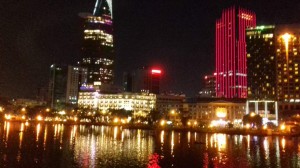
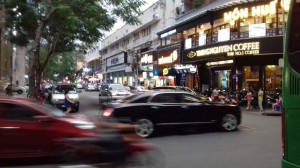
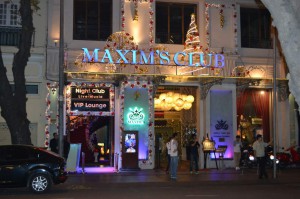

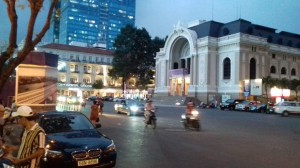

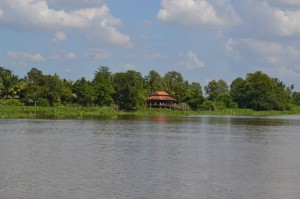
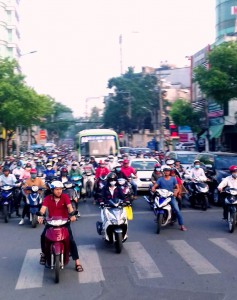

Leave a Reply